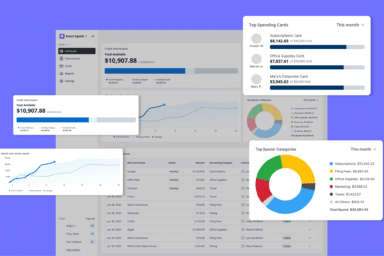ABA Survey: Mobile Lawyer Trends in 2020
Nov 13, 2019
| 5 min readWe’re nearly two decades into the 21st century, and during those 20 years technology has changed at rates never before seen. The legal industry has not been immune to that change, and survey after surveys shows that lawyers are increasingly incorporating technology into their day-to-day practices.
Tethered to your office by outdated law practice management software?
The rise of mobile and cloud computing
One of the technologies that legal professionals have been the most likely to embrace is mobile computing. This trend is no surprise since lawyers were already acclimated to using cell phones on a regular basis when the first smartphones were introduced in 2007. From there, smartphone adoption and mobile computing have become increasingly common in the legal profession.
Of course, it’s one thing to notice a general trend, and quite another to back it up with statistics. That’s where the latest ABA Legal Technology Survey Report that was just released comes in. It provides lots of interesting and current statistics on how lawyers are using mobile tools in 2019 and beyond.
The rise of telecommuting lawyers
Telecommuting is a regular occurrence for the majority of lawyers in 2019, with 55% reporting that they telecommute.* This makes sense since lawyers now have technology – cloud and mobile computing – available to them that allows them to work remotely from wherever they happen to be at any time, as long as they have an internet-enabled device. So as long as lawyers have a smartphone, tablet, or laptop with internet access, they can practice law from just about anywhere.
Of the 55% of lawyers who reported that they telecommuted in the past year, lawyers from firms with 100 or more attorneys were the most likely to do so (60%), followed by 56% of solo attorneys, 53% of lawyers from firms with 2-9 attorneys, and 49% of lawyers from firms with 10-49 attorneys.
Of those who reported that they telecommuted, 6% telecommuted full time. 35% telecommuted 1-3 days per month, followed by 21% who telecommuted 1 day per week, 20% who telecommuted 2-3 days per week, 17% who telecommuted 3-11 times per year, and 1% who telecommuted 2 times per year or less.
Lawyers reported that they telecommuted from a variety of locations, which is further evidence of the convenience offered by cloud-based software and mobile tools. According to the Report, 88% of lawyers who telecommuted work from home. Next up were the 26% who reported that they worked from a hotel, followed by 23% who worked from a vacation home, 14% who worked from offices other than their own, 11% who worked in public places, and 10% who worked in coffee shops and cafes.
The reasons offered for telecommuting were varied as well. 30% reported that their main reason for telecommuting was a “flexible schedule.” Next up was “family obligations” at 25%, followed by “boosts productivity” at 19%, “commute” at 11%, and “other” at 16%.
The rise of mobile device usage by lawyers
Lawyers reported that they used an assortment of mobile devices to get work done. Not surprisingly, smartphones led the way, with a whopping 79% of lawyers reporting that they used an iPhone for work-related tasks. 18% reported that they used an Android smartphone, followed by Blackberry at 7%. Only 1.5% of lawyers reported that they didn’t use a smartphone for work-related purposes.
When asked how they used smartphones while in court, 54% shared that they used them for checking email. Next up was calendaring at 40%, real-time communications at 32%, and legal research at 22%.
29% of lawyers also reported that they used tablet devices in the courtroom. Some of the activities conducted using tablets included email (25%), legal research (19%), calendaring (14%), real-time communications (13%), and accessing court dockets and documents (10%).
Next up, laptops. 44% of respondents indicated that they used a laptop in the courtroom. The most popular tasks accomplished with laptops while in the courtroom were email (34%), legal research (33%), accessing court dockets and documents (26%), and editing documents (24%).
So that’s how lawyers are using cloud and mobile computing tools to work as efficiently and effectively as possible no matter where they happen to be. How does your mobile device usage compare? Are you taking advantage of all of the latest technologies? If you’re not sure, make sure to download this FREE guide to learn all about how your law firm can use technology to its benefit in 2020: “8 Essential Technologies to Increase Your Law Firm’s Productivity.”
*Note that this percentage represents a significant decline from last year when 72% of respondents indicated that they telecommuted. However, this year the format of the question regarding telecommuting changed from “Do you ever telecommute?” to “Do you telecommute?” The drastic change in the responses is likely due to the rephrasing and is also a great example of how the reliability of survey statistics can vary. In fact, there are many instances where this year’s results are markedly different from other years and show a dramatic decline in usage of various types of technology, despite the fact that prior years’ responses had shown a clear upward trend.


